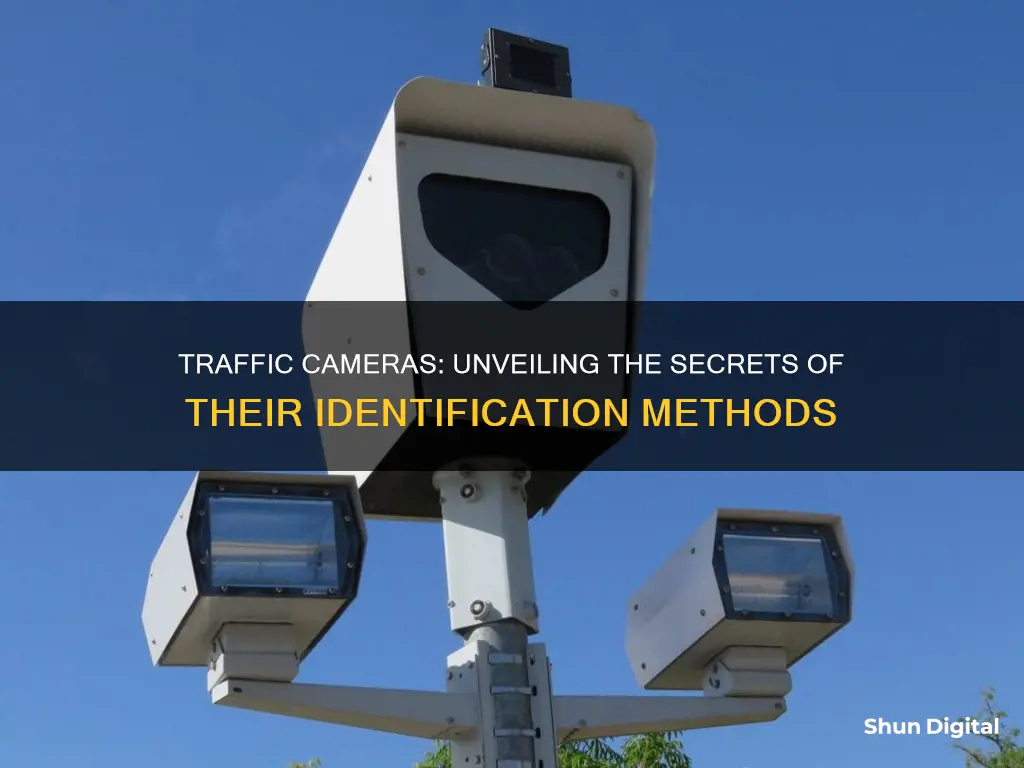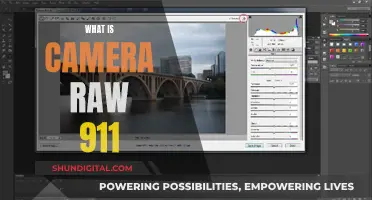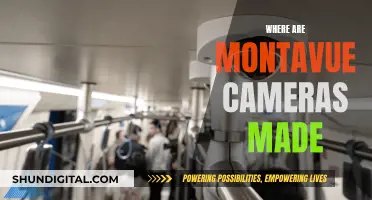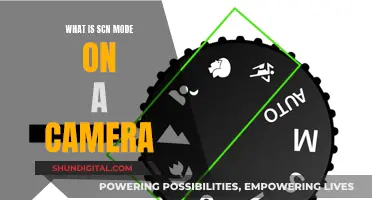
Traffic cameras are a common sight on roads and intersections, but how do they work and what are they used for? Traffic cameras are used to monitor and enforce traffic laws, such as speeding and running red lights. They can be mounted beside or over a road or installed in an enforcement vehicle. While some traffic cameras only monitor traffic and do not issue tickets, others are linked to an automated ticketing system that can identify and penalize drivers for violations. These cameras use various technologies, such as radar and artificial intelligence, to track vehicles and capture evidence of traffic violations. While some people argue that traffic cameras improve road safety and reduce accidents, others view them as an invasion of privacy and a tool for generating revenue. Understanding how traffic cameras work and their potential benefits and drawbacks is essential for drivers and policymakers alike.
| Characteristics | Values |
|---|---|
| Camera Positioning | Mounted beside or over a road, or installed in an enforcement vehicle |
| Camera Function | Detecting motoring offences, including speeding, red light violations, toll booth avoidance, unauthorised use of bus lanes, or recording vehicles in congestion charge areas |
| Camera Linking | May be linked to an automated ticketing system |
| Camera Type | Speed cameras, red light cameras, bus lane cameras, congestion charge cameras, etc. |
| Camera Mechanism | Uses triggers or sensors to detect movement, and may use mathematical formulas to calculate vehicle position and speed |
| Camera Output | Produces photographs or videos of violations, which are then sent to the vehicle owner via postal mail, text, or email |
What You'll Learn
- Red light cameras: These are placed at busy intersections to detect when a motorist enters on a red light
- Speed cameras: These detect speeding violations and can be fixed or mobile
- Traffic sensor cameras: These monitor traffic flow and determine traffic light timing
- Automated number plate recognition (ANPR) cameras: These use AI to read license plate numbers for tracking vehicle movements
- Camera enforcement: This includes red light and speed cameras to monitor vehicle movements

Red light cameras: These are placed at busy intersections to detect when a motorist enters on a red light
Red light cameras are placed at busy intersections to monitor motorists who enter on a red light. These cameras are automated devices that capture evidence of traffic violations, such as running a red light or speeding through an intersection. They are triggered by sensors installed in the road, which detect when a vehicle passes the stop line and enters the intersection on a red light.
The use of red light cameras is a safety measure aimed at reducing accidents and injuries caused by drivers running red lights. According to the Insurance Institute for Highway Safety, 22% of all traffic accidents in the United States are caused by this type of violation, resulting in about 800 deaths and $7 billion in damages and other costs annually. By implementing red light cameras, cities aim to curb this trend and improve road safety.
The cameras are typically mounted high above the intersection, providing a full view of the area and capturing images from different angles. They are synchronized with the traffic signals to detect when a vehicle fails to stop at a red light. In some cases, multiple cameras are positioned at each corner of the intersection to capture images of vehicles travelling in different directions.
When a violation occurs, the camera system captures several pictures of the offending vehicle, along with its license plate. The owner of the vehicle then receives a ticket in the mail, which includes the photographs and instructions for paying the fine or appearing in court. The process may vary slightly depending on the jurisdiction, but the primary purpose is to enforce traffic laws and hold motorists accountable for running red lights.
While red light cameras are not present at every intersection, they are more commonly found in busy urban areas with higher traffic volumes and a greater risk of accidents. They serve as a deterrent and help enforce traffic laws, contributing to a safer driving environment for all road users.
Mastering Camera Raw Color Correction Techniques
You may want to see also

Speed cameras: These detect speeding violations and can be fixed or mobile
Speed cameras are a type of traffic enforcement camera used to monitor compliance with speed limits. They can be fixed or mobile, and may be mounted beside or over a road or installed in an enforcement vehicle. Fixed cameras are usually placed in high-traffic areas or locations that are considered dangerous, while mobile cameras are carried in police cars or vehicles operated by private contractors.
Speed cameras use different technologies to measure the speed of passing cars, including Doppler radar, LIDAR, stereo vision, or automatic number-plate recognition. They can pick out individual cars across multiple lanes of traffic and capture their speed. The latest automatic number-plate recognition systems can also be used to detect average speeds, although this has raised concerns about privacy and the potential for mass surveillance.
Once a vehicle's speed has been measured, the camera system compares it to the posted speed limit. If the vehicle is determined to be speeding, the camera captures a photo of the vehicle, which can then be used as evidence of the speeding violation. The registration information associated with the vehicle's license plate is then used to send a ticket to the owner of the vehicle.
The use of speed cameras has been shown to be effective in reducing speeding and the number of accidents and injuries on the road. Studies have found that speed cameras led to a reduction of "11% to 44% for fatal and serious injury crashes". Additionally, the presence of speed cameras can act as a deterrent, encouraging drivers to pay more attention to their speed and adhere to the speed limit.
Dual Focus Camera: Capturing Two Images at Once
You may want to see also

Traffic sensor cameras: These monitor traffic flow and determine traffic light timing
Traffic sensor cameras are the most common type of traffic camera. They are usually small, cylindrical or dome-shaped, and enclosed in a weatherproof housing. They are installed on top of traffic signals or mounted high on light poles above roadways. They monitor traffic flow and determine traffic light timing.
Traffic sensor cameras are not tied to any enforcement system, and the footage is not typically archived or used for incident reconstruction. Instead, they are used to measure traffic flow and ensure that traffic signals change at the right time. They do this by looking at the density of traffic.
These cameras do not track license plates, and drivers' habits are not taken into account when determining traffic light timing.
Unturned Camera Mode: How to Activate and Use It
You may want to see also

Automated number plate recognition (ANPR) cameras: These use AI to read license plate numbers for tracking vehicle movements
Automated number plate recognition (ANPR) cameras are a highly accurate system capable of reading vehicle number plates without human intervention. ANPR uses optical character recognition (OCR) on images taken by cameras to read vehicle registration plates and create vehicle location data. ANPR can be used to store images and text from the license plate, with some systems also storing a photograph of the driver.
ANPR cameras are used by police forces around the world for law enforcement purposes, including checking if a vehicle is registered or licensed, and identifying vehicles involved in criminal activities. ANPR is also used for electronic toll collection on pay-per-use roads and as a method of cataloguing the movements of traffic.
There are two primary types of ANPR systems: fixed systems and mobile systems. Fixed systems are installed at a specific location, such as toll collection booths or border crossings, while mobile systems are carried by a vehicle and can be used to scan the registration plates of other vehicles.
The process of ANPR involves several steps:
- Image acquisition: The ANPR camera captures images or videos of license plates, often using infrared lighting to enable operation at any time of day or night.
- Number plate detection and cropping: Machine learning and computer vision methods are used to detect and crop the license plate within the image.
- Number plate extraction and reading: OCR software is applied to the detected plate area to convert the license plate image to text format.
- Number plate information usage: The converted text is stored in a database and can be used to compare the license plate to a database of registered plates or to retrieve information about the vehicle.
ANPR offers several advantages, including automation, accuracy, analytics, identification, cost-efficiency, low footprint, scalability, convenience, versatility, security, and environmental benefits.
Leaving Your Camera in the Car: Good or Bad?
You may want to see also

Camera enforcement: This includes red light and speed cameras to monitor vehicle movements
Camera enforcement is a crucial aspect of traffic monitoring, encompassing red light and speed cameras strategically positioned to deter and capture vehicle infractions. These cameras serve as an effective tool to enhance road safety and reduce accidents. Here's an in-depth look at camera enforcement and its role in monitoring vehicle movements:
Red Light Cameras:
Red light cameras are typically installed at busy intersections to capture vehicles running red lights. These cameras work in conjunction with sensors embedded in the road surface or radar technology. When a vehicle crosses the stop line or enters the intersection after the lights turn red, the sensors trigger the camera to capture a digital image of the offending vehicle, including its license plate and type. These cameras operate day and night, automatically enforcing traffic rules and reducing the risk of accidents caused by red-light runners.
Speed Cameras:
Speed cameras are another vital component of camera enforcement. They are used to monitor vehicle compliance with speed limits. These cameras can be fixed, mounted on poles or gantries, or mobile, handheld, or vehicle-mounted. Speed cameras use various technologies, such as Doppler radar, LIDAR, stereo vision, or automatic number-plate recognition, to accurately measure vehicle speed. They are strategically placed on roadsides, elevated poles, or inside enforcement vehicles to capture speeding violations.
Effectiveness and Impact:
The implementation of camera enforcement has proven effective in reducing accidents and injuries. Studies have shown that speed cameras led to a significant reduction in fatal and serious injury crashes, ranging from 11% to 44%. Similarly, red light cameras act as a deterrent, reducing the number of vehicles running red lights and decreasing the likelihood of severe crashes at intersections. Camera enforcement also helps identify and penalize other traffic violations, such as unauthorized use of bus lanes, toll booth evasion, or congestion charge violations.
Privacy Concerns:
While camera enforcement enhances road safety, it has raised concerns about privacy and government surveillance. The use of automatic number-plate recognition systems enables the detection of average speeds and the tracking of vehicle movements, which can indirectly monitor the movements of vehicle owners. This has sparked debates about the potential for mass surveillance and the balance between public safety and individual privacy.
In summary, camera enforcement, including red light and speed cameras, plays a pivotal role in monitoring vehicle movements, deterring traffic violations, and improving road safety. The strategic placement of these cameras, along with the utilization of advanced technologies, helps enforce traffic rules and protect motorists and pedestrians alike.
Traffic Cameras: Mobile or Static?
You may want to see also
Frequently asked questions
Traffic cameras are usually mounted beside or over a road or installed in an enforcement vehicle. They are used to detect motoring offenses, including speeding, vehicles going through a red traffic light, and unauthorized use of a bus lane.
There are two main types of traffic cameras: automated traffic enforcement cameras, which can issue tickets, and those that simply monitor speed, traffic volume, and road conditions.
Red light cameras are automated enforcement systems that law enforcement uses to monitor intersections. They are synchronized with the traffic signals and take pictures of vehicles that pass through an intersection when the light is red. The vehicle's owner then receives a ticket in the mail.
If a red light camera catches you, you will typically receive a ticket in the mail, including photographs of your vehicle's violation and your license plate, as well as instructions for paying the fine or appearing in court.







